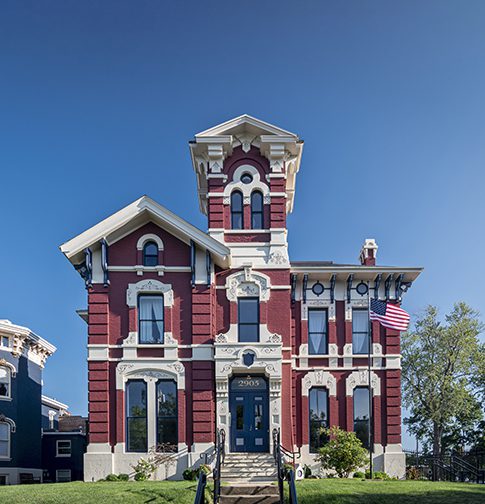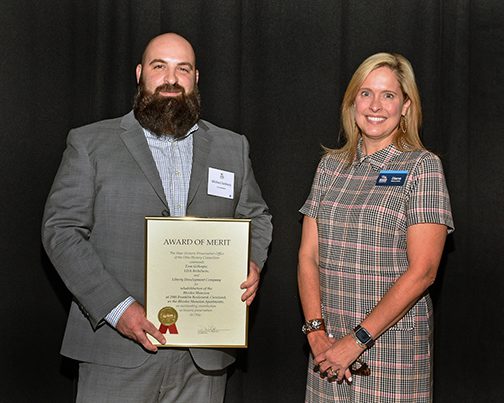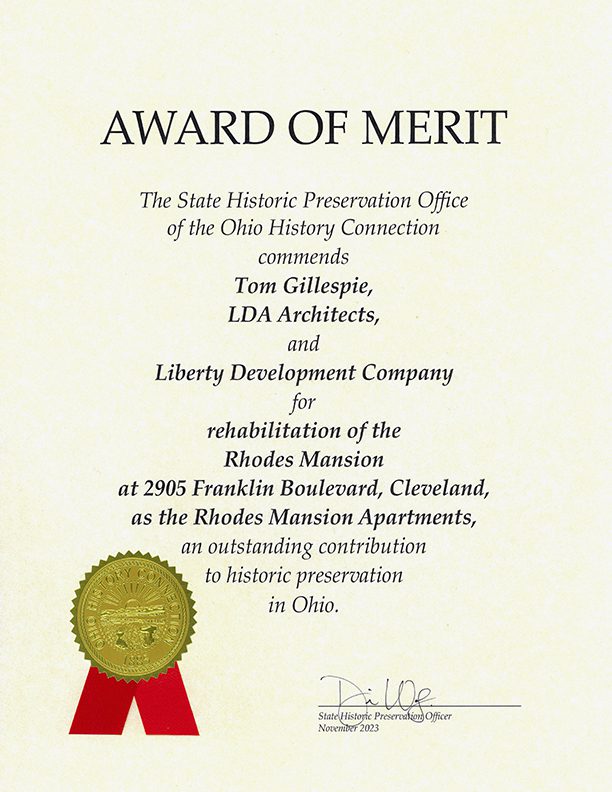Rhodes Mansion
Preservation Merit
The Rhodes Mansion was constructed in 1874 near Franklin Circle in the heart of Ohio City, which was annexed to Cleveland in 1854. The building was constructed for Robert Russell Rhodes; the great-grandson of Ohio City's first Mayor Josiah Barber and a son of the local iron-and-coal industry leader Daniel Rhodes. The mansion served as a residence for only its first 40 years, until 1914, when it was purchased by Cuyahoga County.
Between 1914 and 1918 the county constructed the annex on the back of the mansion for use as a juvenile detention center. Throughout the next 100-plus years the county used the building for a variety of purposes, including a nursing home, the county welfare department, a school for disabled children, and the county archives.
The property is listed in the National Register of Historic Places as a contributing resource in the Ohio City Preservation District. The nomination described it as the most spectacular residence in the district, a great High Victorian Italianate house with a central Tuscan tower, heavy stone door frame and stoop, and unusual stone hood molding at the windows.
The Rhodes Mansion rehabilitation project converted the building from its previous office-and-storage layout as the County Archives into 32 apartments, with community space on the first floor and a new roof deck for the residents above the annex. Although the historic mansion portion of the building has undergone significant changes through the years, many of the original architectural features, including many of the original room layouts, fireplaces, doors, and wood floors were retained and incorporated into the new residential units. The Annex building had long been a county-owned and -operated building with institutional features. The large and cavernous open spaces were divided into comfortable apartments and new flooring and fixtures were used to create an inviting residential atmosphere.
The Rhodes Mansion project achieves qualities that other apartments in the neighborhood cannot, namely affordable rents and historic character. As new construction and high-density apartments are transforming nearby areas of Ohio City, this project is having a positive impact on the neighborhood by maintaining the historic appearance and scale that attract residents to Ohio City, while providing contemporary amenities and proximity to a desired urban environment.



